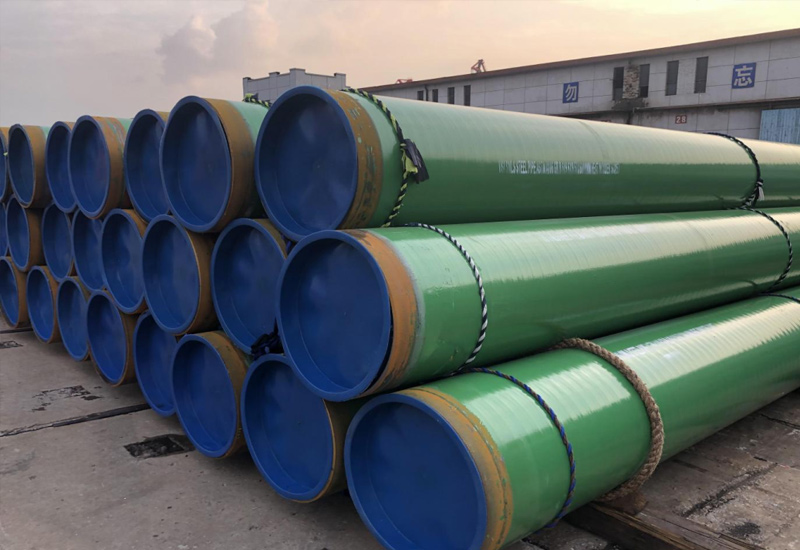HOT BLOG TAGS
JIS G3454
JIS G3454:2017 – Carbon Steel Pipes for Pressure Service
1. Standard Definition and Background
JIS G3454, JIS G3455, JIS G3456 Japanese Standard (JIS) G3454 and G3455/ G3456 It isJapanese Industrial Standard (JIS), developed by JISC,. This current 2017 edition replaces the 2012 edition and changes some sizing (wall thickness) in section 2.1. This specification covers minimum-wall-thickness, seamless and welded, carbon and alloy-steel tubes intended for use at low temperatures Manufacture: tubes to this specification are manufactured by transverse welding, of which the straight seamm welded steel pipe is a single-strip of steel without jionts;The other is the product that steel strip is butt welded.
Key Technical Evolution:
Version History: Originally published 1988; substantial revisions in 2005, 2007, 2012, 2017
System Notation: JIS Not Equals ANSI/DIN; Japan Petroleum Institute (JPI) furnished ANSI-equivalent standards
Critical Features:
It adopts Sch thickness series(Sch10-Sch160), which are the generally mentioned steel pipe thickness series, and partially permitted by standard ANSI B36. 10
Covers OD size range: 10.5 to 660.4 mm (0.413 in to 26.000 in).
Not for high temp applications(>350° need to use JIS G3456)
2. Scope of Application
2.1 Primary Applications
Industrial Systems:
Petrochemical: Low-pressure steam, cooling water lines
Power: Boiler feedwater, heat exchanger tubing
Manufacturing: Compressed air, hydraulic oil systems
Excluded Services:
Temperatures >350°C
Corrosive media (e.g., acidic gases) without protective coatings
2.2 Service Conditions
Pressure Rating: Sch thickness grades match pressure needs (e.g., Sch40 ≤2.5 MPa)
Environment: Neutral soils (pH 4–10); corrosive conditions require coatings
3. Dimensions and Tolerances
3.1 Size Ranges
| Parameter | Range | Notes |
| Outside Diameter | 10.5–660.4 mm | DN6A–DN650A |
| Wall Thickness | 2.4–25.4 mm | 10 Sch grades (10–160) |
3.2 Key Tolerances
Table: Geometric Tolerances
| Parameter | Permissible Deviation | Conditions |
| Outside Diameter | ±0.3 mm (OD≤34 mm) | Precision small pipes |
| ±0.8% OD (OD≥42.7 mm) | Large-diameter pipes | |
| Wall Thickness | ±0.3 mm (t<3 mm) | Thin-wall pipes |
| ±10% t (t≥3 mm) | Standard thickness | |
| Pipe End Ovality | ≤1% OD (within 100 mm of end) | Ensures weld alignment |
| Straightness | ≤0.2% pipe length | Full-length measurement |
Special: OD>350 mm pipes require circumference verification (π=3.14).
4. Material and Performance Requirements
4.1 Grades and Chemical Composition
Table: Chemical Composition (wt%, Ladle Analysis)
| Element | STPG370 | STPG410 |
| C ≤ | 0.25 | 0.30 |
| Si ≤ | 0.35 | 0.35 |
| Mn | 0.30–0.90 | 0.30–1.00 |
| P ≤ | 0.040 | 0.040 |
| S ≤ | 0.040 | 0.040 |
Impurity Control: Low P/S limits minimize cold brittleness.
4.2 Mechanical Properties
Table: Mechanical Requirements
| Grade | Tensile Strength (MPa) | Yield Strength (MPa) | Elongation (%) | Flattening Test |
| STPG370 | ≥370 | ≥215 | ≥30 (longitudinal) | H ≤ 0.85D, no crack |
| STPG410 | ≥410 | ≥245 | ≥25 (longitudinal) | H ≤ 0.85D, no crack |
Special Provisions:
Thin-Wall Adjustment: For t<8 mm, elongation may decrease 1.5% per 1 mm thickness reduction
Weld Strength: ≥95% of base metal tensile strength
5. Testing and Quality Control
5.1 Mandatory Tests
Pressure Test:
Hydrostatic/pneumatic at ≥1.5× working pressure (≥5 s hold)
Alternative: Eddy current testing (EN 10246-1) for DN<600 mm
Destructive Tests:
Tensile test: 2 samples per ≤100-pipe batch
Flattening test: Mandatory for welded pipes (H ≤ 0.85D)
5.2 Non-Destructive Examination (NDE)
Weld Inspection: 100% UT or RT for welded pipes (RT acceptance: JIS Z3104 Level II)
Surface Defects: Repair/remove if depth >12.5% wall thickness
6. Engineering Applications and Limitations
6.1 Grade Selection Examples
| Application | Recommended Pipe | Service Conditions |
| Steam distribution | STPG370-Sch40 | ≤2.5 MPa, ≤350°C |
| High-pressure feedwater | STPG410-Sch80 | ≥4.0 MPa, ≤300°C |
6.2 Technical Limitations
International Compatibility:
JIS flange ratings (2K–63K) incompatible with ANSI PN/Class
Requires JPI standards for ANSI alignment
Thickness Coverage:
No provisions for t>25.4 mm (custom agreement needed)
Impact Testing:
Not required by default; mandatory for low-temp services via contract
7. Conclusion and Technical Outlook
JIS G3454 provides a reliable technical foundation for pressure piping through:
Standardized Thickness Grading: Sch series enables precise pressure matching
Material Consistency: Strict P/S control (≤0.040%) ensures fracture resistance
Manufacturing Flexibility: Accommodates seamless/welded processes
Future Developments:
Hydrogen Compatibility: Low-carbon variants (e.g., STPG370-L) for hydrogen transport
Global Harmonization: Enhanced ANSI alignment via JPI standards
Implementation Guidance:
For >300°C services: Prefer STPG410-Sch80 combinations
Export projects: Specify JIS-JPI standard conversions
Buried pipelines: Apply external coatings (e.g., coal-tar epoxy)
Related Products
Share:
HOT TAGS
latest posts
- 3LPP coated pipe: anti-corrosion guard in high temperature and high pressure environment
- ASTM A53 LSAW Steel Pipe Selection Guide for Oil and Gas Transportation Pipelines
- API 5L LSAW Pipe: A Deep Dive into PSL1 vs. PSL2
- Steel Pipe Sizing Errors? DN vs. OD Explained for Buyers
- NDT for Pipe Welds: X-ray vs. Ultrasonic Testing









